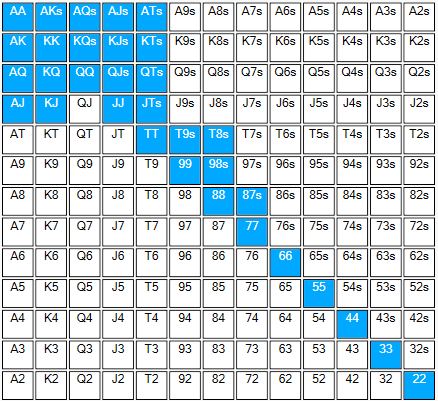How is the hole cards hand range calculated?
The hand range displayed in the hole cards view is estimated by starting with the actual number of times each hand is shown. You can view the actual hand counts by selecting the “Actual hand counts” Show option.

The hand count is shown under each hand in the grid.
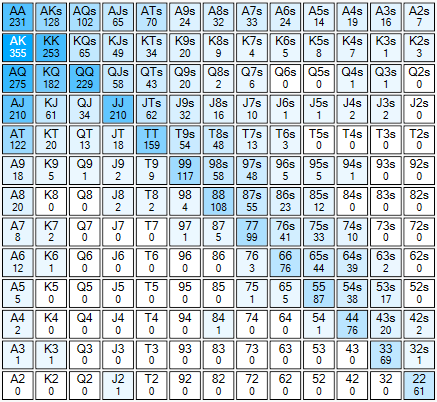
So in this example AA was shown 231 times and A2 off-suit was never shown.
There are 4 possible ways to make a suited hand, 6 ways to make a paired hand, and 12 ways to make an unsuited hand. That means that unsuited hands will be dealt, on average, 3 times more often that suited hands.
In the example above AKs is shown 128 times and AK is shown 355 times. So AK is shown about 2.77 times more often than AKs. The reason it is less than 3 is probably because suited hands are more likely to reach showdown than unsuited hands.
In order to adjust for this bias, Range Wizard (RW) multiplies each suited hand count by 3 and each paired hand count by 2. You can view the unbiased hand counts by selecting the show “Unbiased hand counts” option.
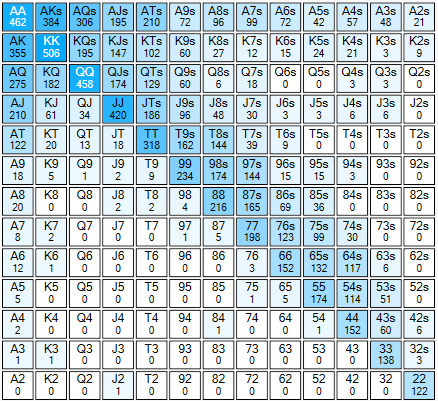
That is better but there is still a lot of noise in the counts. For example K3s is shown 3 times and K2s is shown 9 times. We need a way to smooth out the counts so there aren’t any big spikes or holes.
RW smooths the counts by averaging each count with it’s adjacent neighbors. For example, K3s gets averaged with A4s,A3s,A2s,K4s,K2s,Q4s,Q3s, and Q2s. You can view the smoothed out counts by selecting the show “Adjusted hand counts” option.
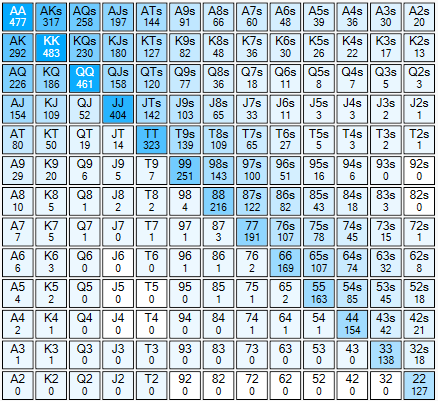
It’s not perfect, but it provides a reasonable estimate of how often each hand is played.
To compute the weighted hand range, RW sorts each hand in to 5 buckets based on the adjusted hand count: 100%, 75%, 50%, 25%, and 0%. It allocates the hands with the highest counts into the 100% bucket. The next highest counts go in the 75% bucket and so on until total percentage of all hands in the buckets equals the stats value.
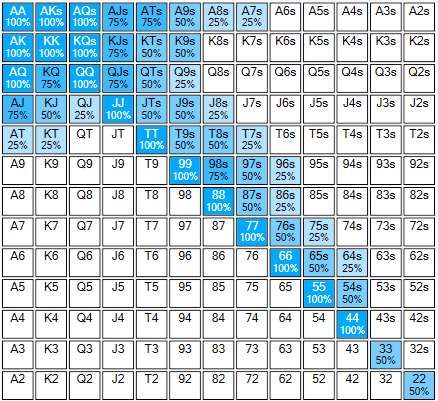
In the example above, the stat is PFR and the value for PFR is 14.4%. So the total of the hand counts times the bucket values will equal to about 14.4% of all hands that could have raised preflop.
The hand range is computed the same way, but with just two buckets: 100% and 0%.
